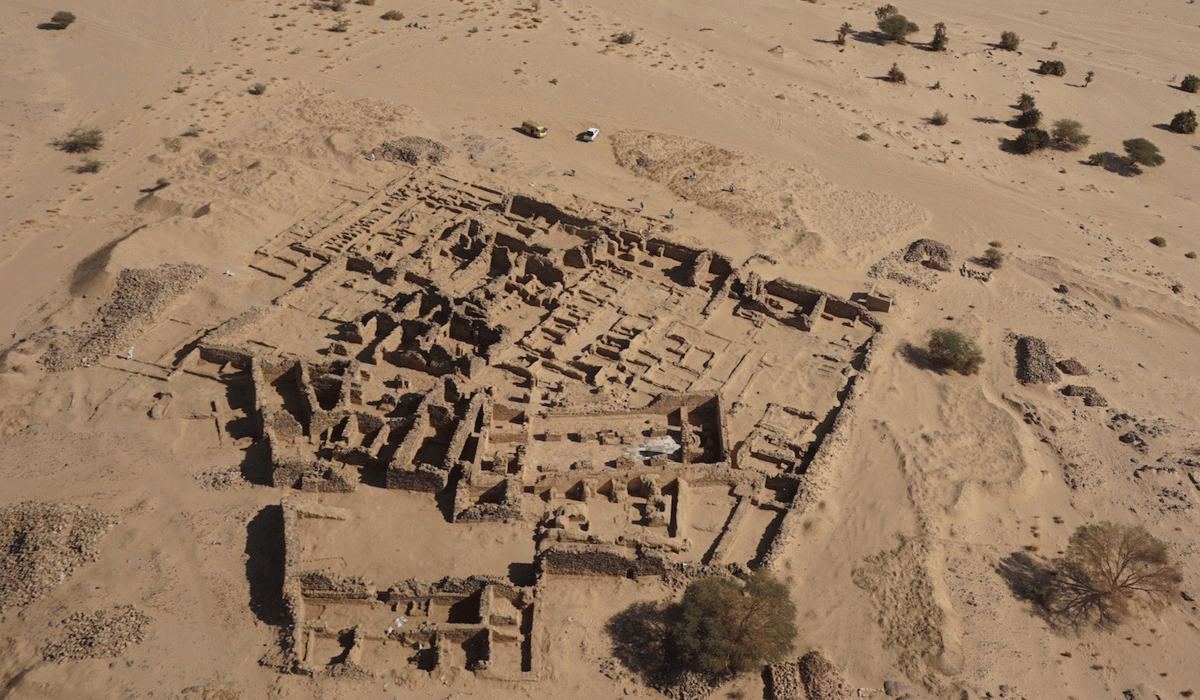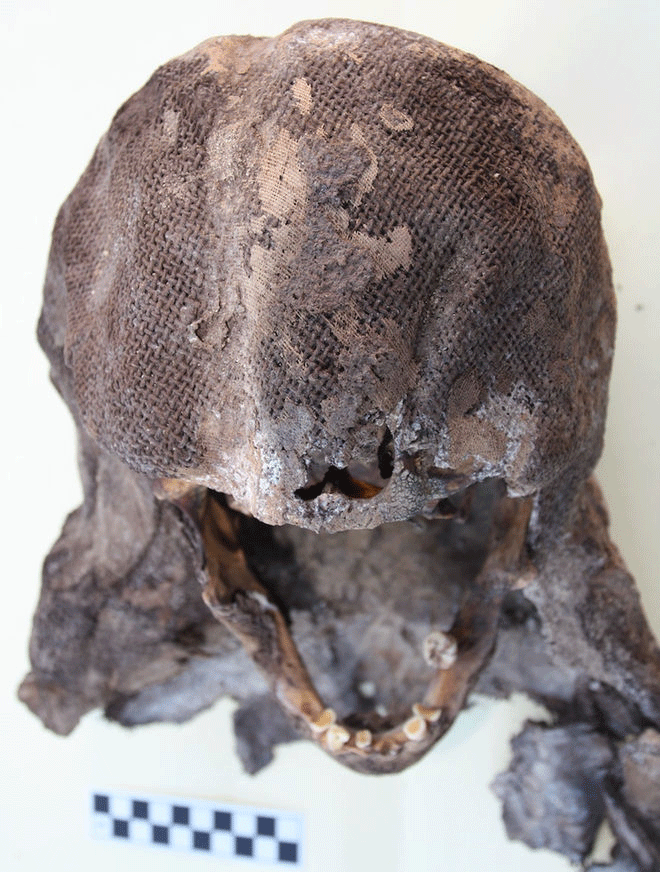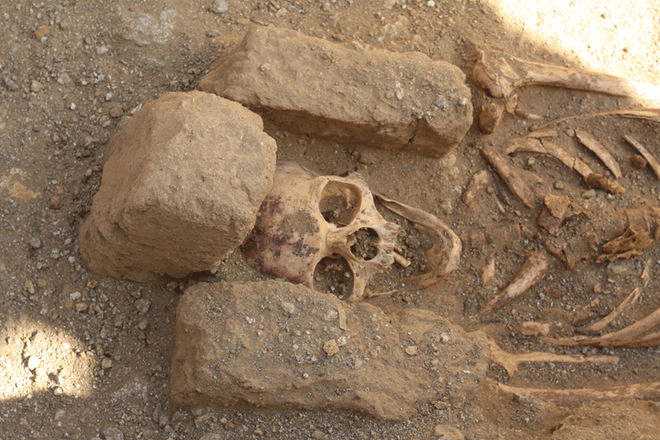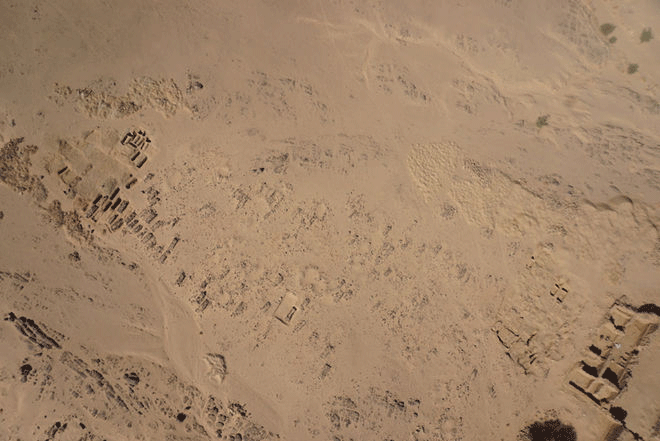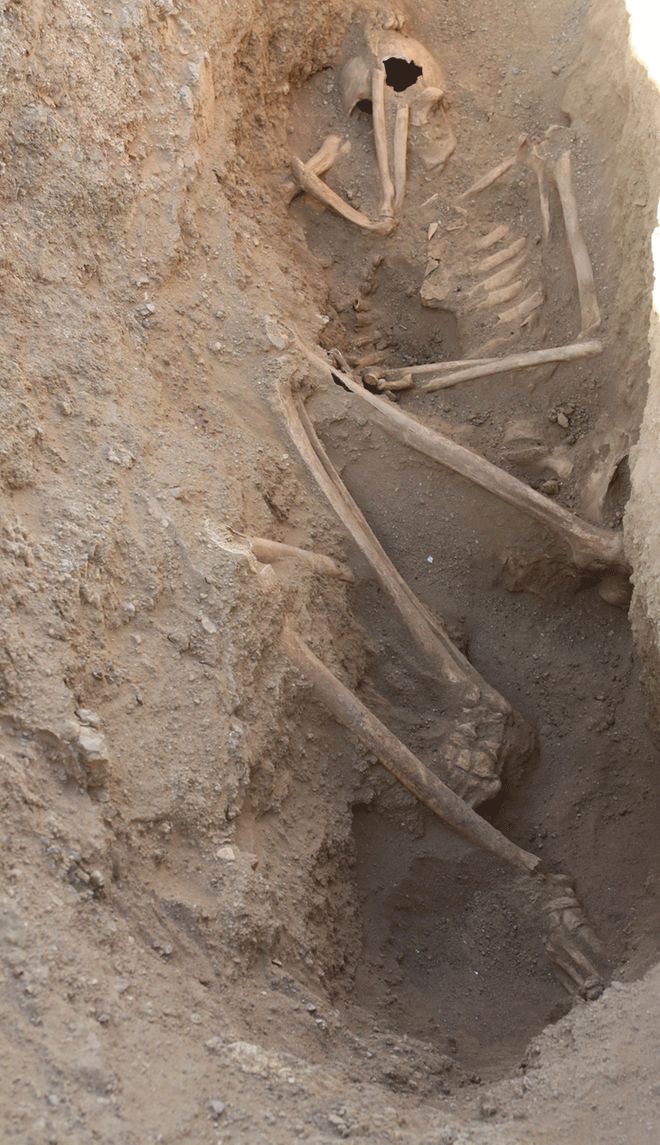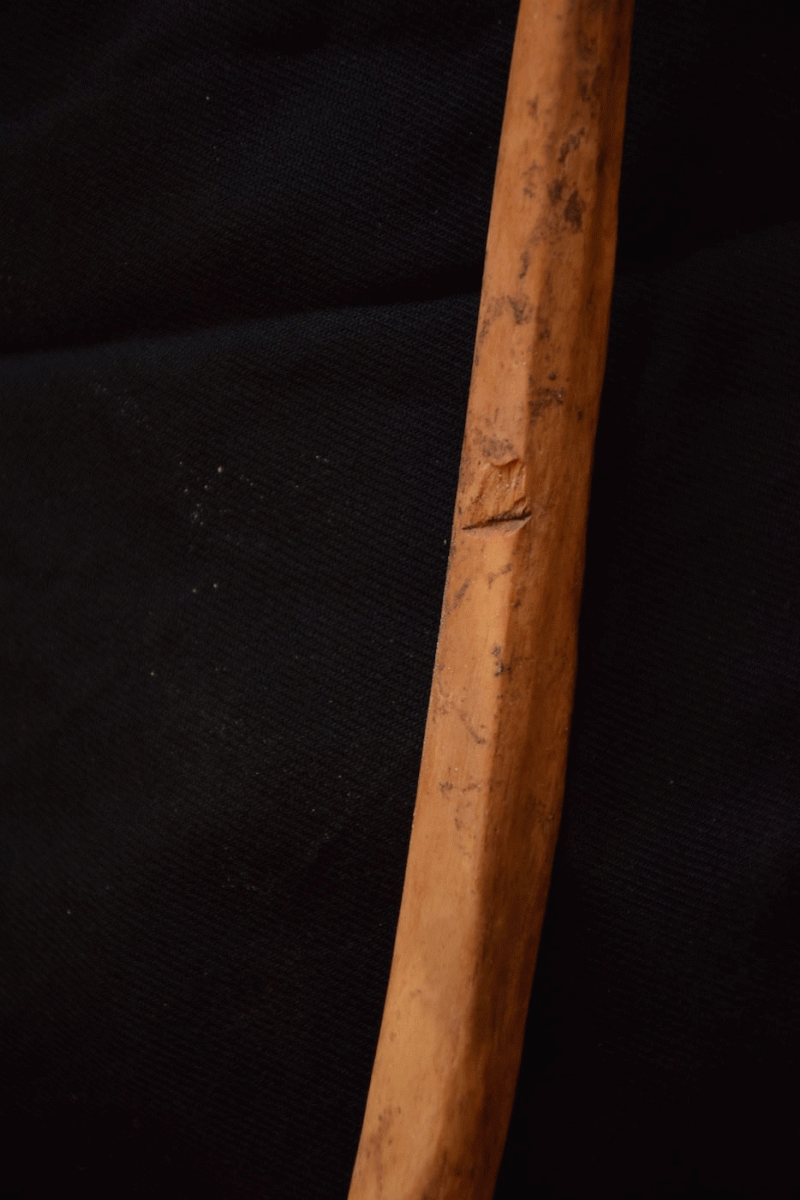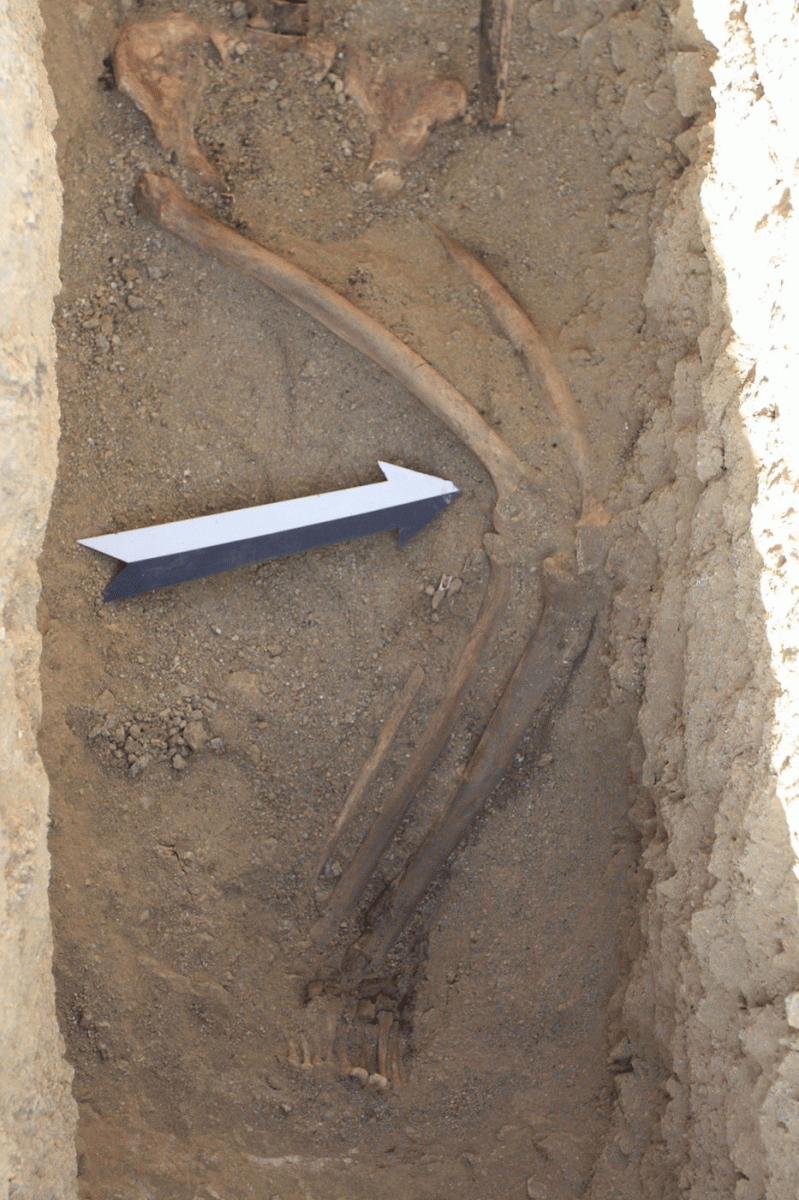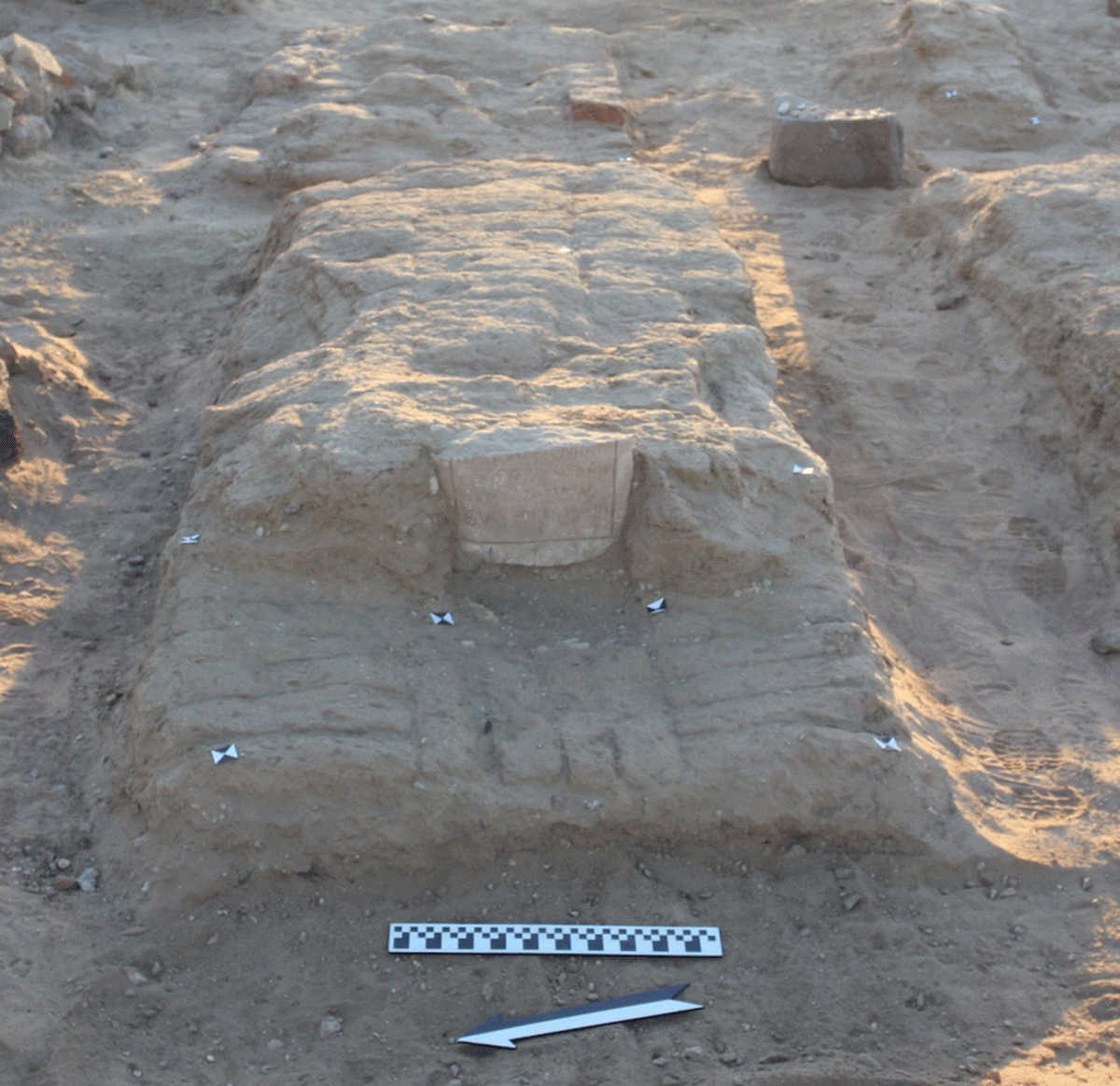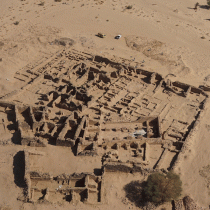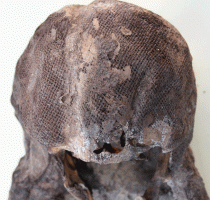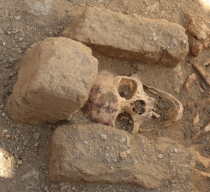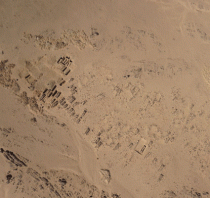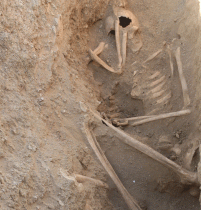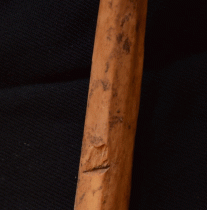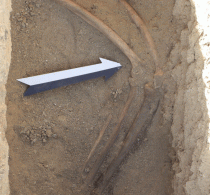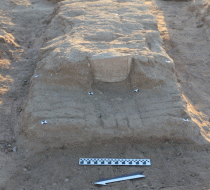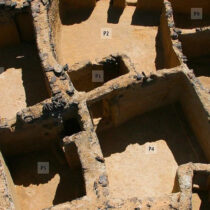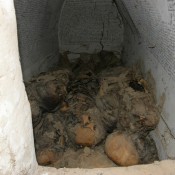Archaeologists in Sudan have discovered a medieval burial area with cemeteries in Sudan excavating at least 123 individuals, some buried in unusual ways. The cemeteries were unearthed near the remains of a medieval Christian monastery, called al-Ghazali, near the River Nile, and was probably occupied by its tenants about 1,000 years ago, at a time when a series of Christian kingdoms flourished in the area. The findings were presented this month at the joint annual meeting of the Archaeological Institute of America and the Society for Classical Studies in Toronto by Robert Stark, a doctoral student at McMaster University in Hamilton, Ontario.
The cemeteries were first excavated by archaeologist Peter Shinnie in the 1950s, but only a small part of the burials had been uncovered during his fieldwork. Now large-scale excavations are carried out in all four cemeteries by an expedition of the Polish Centre of Mediterranean Archaeology at the University of Warsaw.
One of the cemeteries contains adult males, therefore archaeologists conclude it was probably used by the monks from the monastery. Two of rest cemeteries consist various individuals and were probably used by people from nearby settlements. The four cemetery, however, contains only 15 burials.
Among other finds researchers have found burial shrouds, some still covering the skulls of the individuals who were buried bearing them, as well as tombstones with engravings of prayers in Greek or Coptik. In the fourth cemetery, the one consisting of only 15 burials, some burials are quite unusual: two individuals bore post-mortem cut marks incised in their bones. The bones were analysed and it is evident that they were incised at about the time the two individuals had died, while the bones were still quite fresh. Researchers have excluded the possibility the incisions on the bones were caused by animals, but do believe that it is possible the marks were created during some kind of defleshing.
Another unusual burial in the cemetery was that of an individual whose legs were lying at a 45-degree angle, while its right arm was left dangling across their head, in a rather “haphazard” way, as Stark described it. However, the grave was properly dug into the ground, and a stone structure was built above it, as it seems.
The remains of stone structures found on the surface of all four cemeteries above the burials were tombstones. The writing on them displayed a consistent pattern of two parts according to Artur Obluski, director of the excavations at al-Ghazali. The first part consisted of prayers. The second part consists of information on the individual buried, such as their name, age and time of death, and sometimes their titles and professions.
